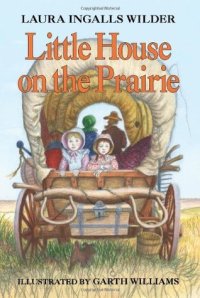**This post assumes that you have already read the novel**
Children are often considered inferior to adults, yet they have so many positive and beneficial qualities that adults have unfortunately lost, resulting in the development of many negative aspects in society. The realistic fiction novel To Kill a Mockingbird by Harper Lee narrates the trial of Tom Robinson. The speaker, Scout Finch, recounts the events preceding the trial, the trial itself, as well as what happens after the trial. Although the central event is the trial of Tom Robinson and the injustice faced by colored people in America, Harper Lee cleverly implements the themes of courage, coming of age, and perspective. Specifically, the voice of young Scout Finch and the actions and dialogue of the rest of the children provide perspectives of innocence and impartiality, as well as a strong moral compass to portray societal aspects in a unique way.
Scout’s naive mindset allows readers to understand the events of the novel as they are, without the influence of prior biases. This genuinity enables readers to have a clear understanding of the unjust actions in Maycomb’s society. One such example is provided when Scout recognizes Mr. Cunningham in the group of people who arrive at the jail where Tom Robinson is being kept. Although she provides some background facts on Mr. Cunningham, Scout does not state her specific opinions or thoughts about him. She does not describe the group’s intentions, nor does she explicitly say that they are a mob–she simply describes what is happening. Harper Lee created the character of Scout as an honest young girl. With Scout’s unbiased account of events, readers are able to use their prior knowledge and develop their own opinions and understandings on the intentions and morals of the group. Many works addressing the topic of stereotypes and prejudice have authors writing with an argumentative tone, so the open-mindedness of Scout’s narration provides a sincere perspective, allowing readers to evaluate the negatively segregating aspect of society in a new way.
In addition to Scout, the rest of the children’s actions are highly notable. They place strong emphasis on morals and ethical behavior. Arguably, one of the most momentous examples of children displaying ethical behavior in the novel is woven in Dill’s disappointed and angry reaction with the way Mr. Gilmer is talking during the trial. Dill is not quite as young and naive as Scout, nor is he as understanding and observant as Jem, so his behavior during the trial is very significant to the theme of justice. On the other hand, Jem is a character whose growth and increasing comprehension is a major part of the novel, yet he is still young enough to not have caught “Maycomb’s usual disease”: the racial prejudice in Maycomb. His earnestness is seen in his reaction to Tom Robinson’s verdict: he starts to cry, and says that it is very wrong. With his comparatively higher level of maturity and understanding, Jem’s behavior again depicts the immorality of Tom Robinson’s case. In turn, it depicts the immorality of many aspects of society, especially the aspect of racism, stereotypes, and assumptions.
Children are considered the epitome of innocence, kindness, morality, and ethics. The use of children in To Kill A Mockingbird unveils an aspect of society otherwise obscured by prior judgements, influence, stereotypes, expectations, prejudice, and much more. A youthful voice allows for readers to evaluate multiple aspects of society in a new way, and it also ensures a strong sense of morality throughout the novel. The use of children’s perspectives in Harper Lee’s work help to emphasize the just and unjust aspects of society, and readers also acquire significant insight into these aspects. Memories and qualities may fade away, but insight is never lost, and people will be able to adopt habits to improve their ways. After all, if children’s qualities are so admired, it only makes sense to make an effort to eradicate the negative effects the absence of these qualities have on society.
-Ayati M.
To Kill A Mockingbird by Harper Lee is available for checkout from the Mission Viejo Library. It can also be downloaded for free from Overdrive.



